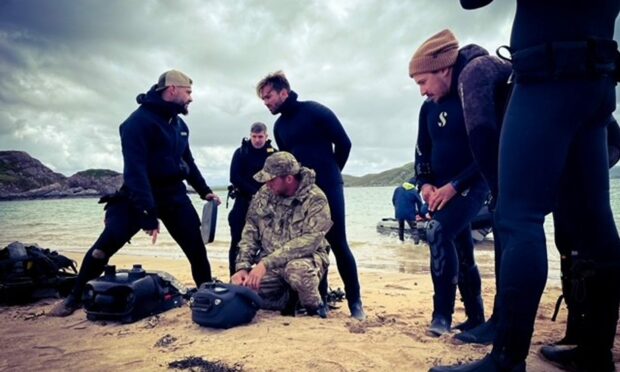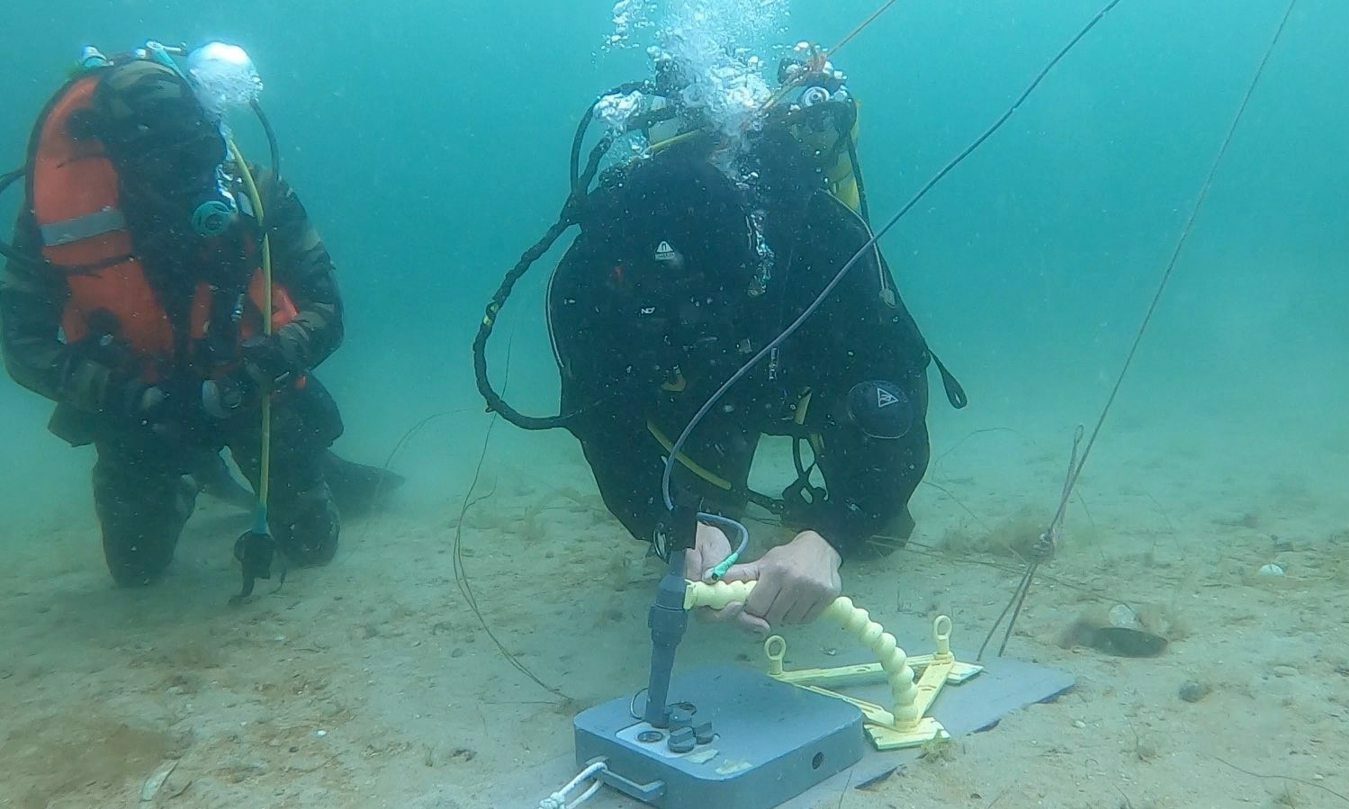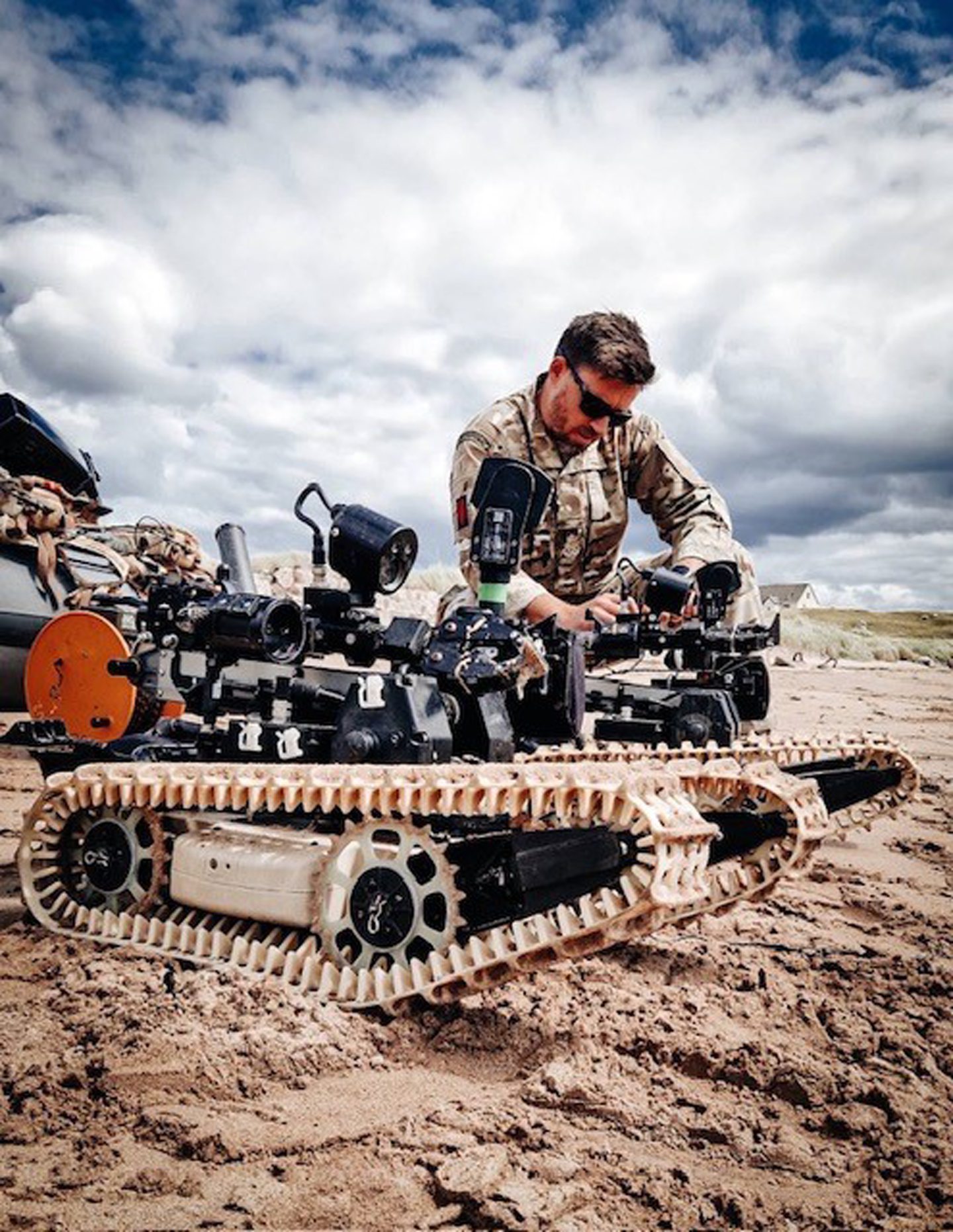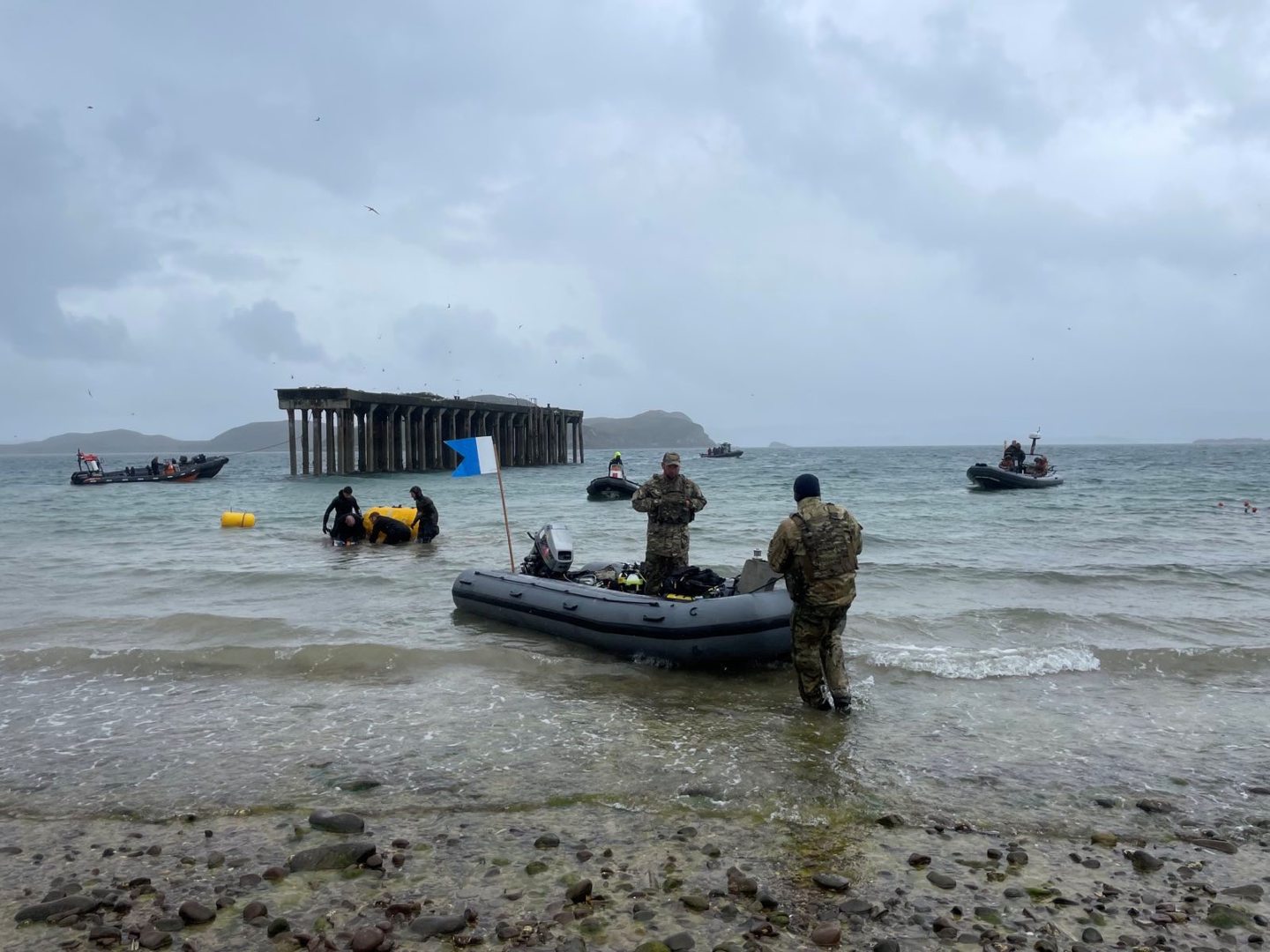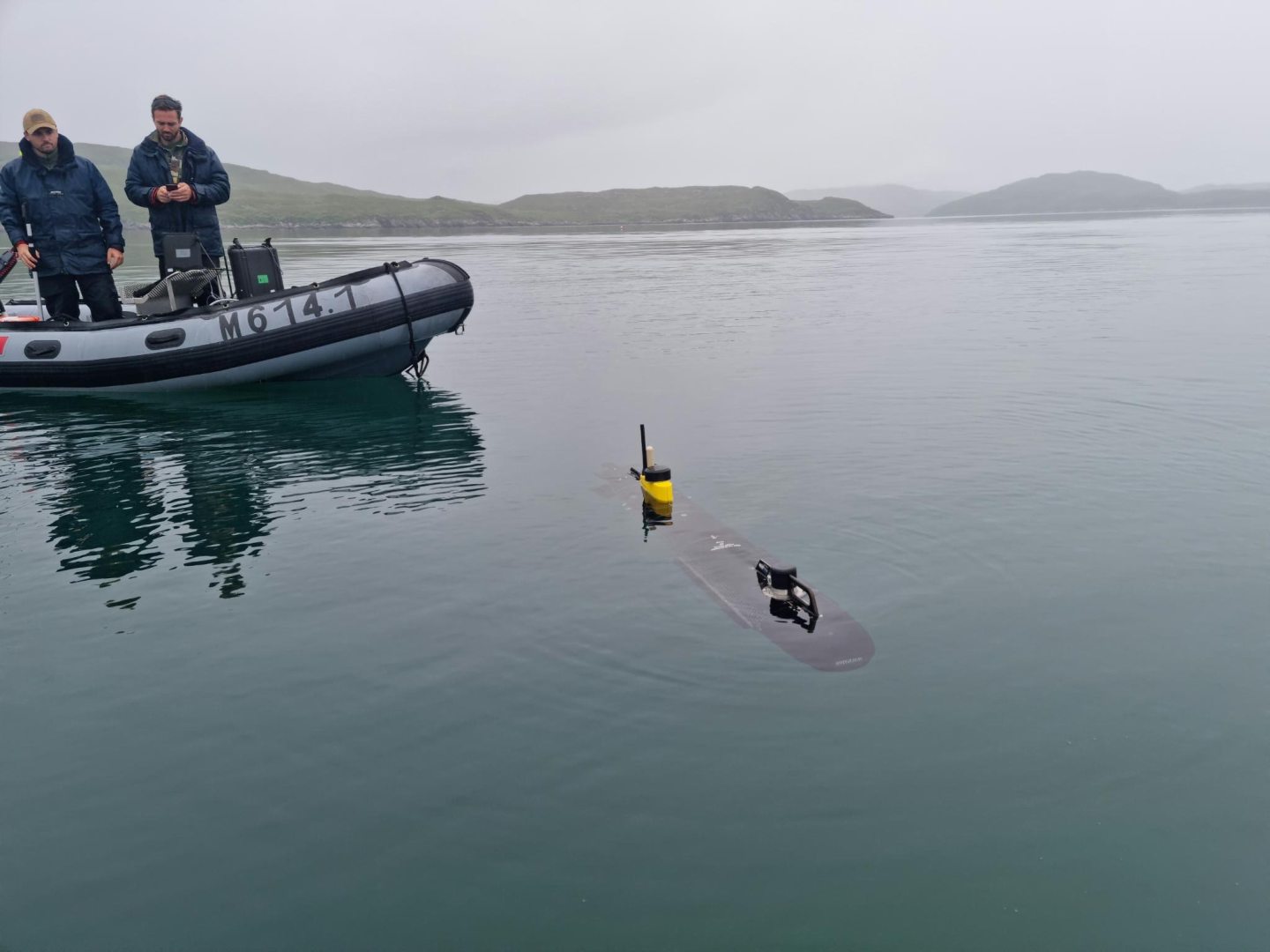The Ukrainian military has been training with the Royal Navy in the Highlands to learn how to disarm Russian bombs, booby traps and mines.
Divers, bomb disposal and mine warfare experts have been at Loch Ewe, south of Ullapool, to take advantage of the quiet waters.
Explosive devices have been blighting land in Ukraine since the invasion began with concerns also affecting commercial shipping in the region.
Military from the country travelled to the Highlands to learn from experts to help those in their homeland live without fear of explosives.
What training was done at Loch Ewe?
Training for the Ukrainian military from the Royal Navy in the Highlands initially started with clearing the equivalent of deep water shipping lanes.
Crews were also shown how to make shallow water and beaches safe for raids from the sea.
The training also covered clearing ports, jetties and other infrastructure from potential threats.
Teams training with crewless submarine robots with technology that generate images so threats can be identified.
Once the risk has been assessed, divers then moved in to make the device and the surrounding area safe.
Demonstrations were done with floating mines, ground mines and improvised explosive devices either in or near the water.
Personnel the Royal Navy delivered the training in the Highlands for the Ukrainian military alongside Nato allies from the US, France, Belgium and Georgia.
Lieutenant Ali Aindow, officr in charge of the Royal Navy’s Delta Diving Unit 1, said: “The Ukrainian Navy divers have been great, it’s been a brilliant opportunity to share experience and learn techniques from each other.
“The Ukrainians are really focused and their enthusiasm for the training has been amazing.”
Lieutenant Frank Macleod, part of the Royal Navy training team, added: “‘The Ukrainians have been fantastic, motivated and very professional sailors.
“We have learnt together over the last few weeks and delivered a very credible search capability.”
